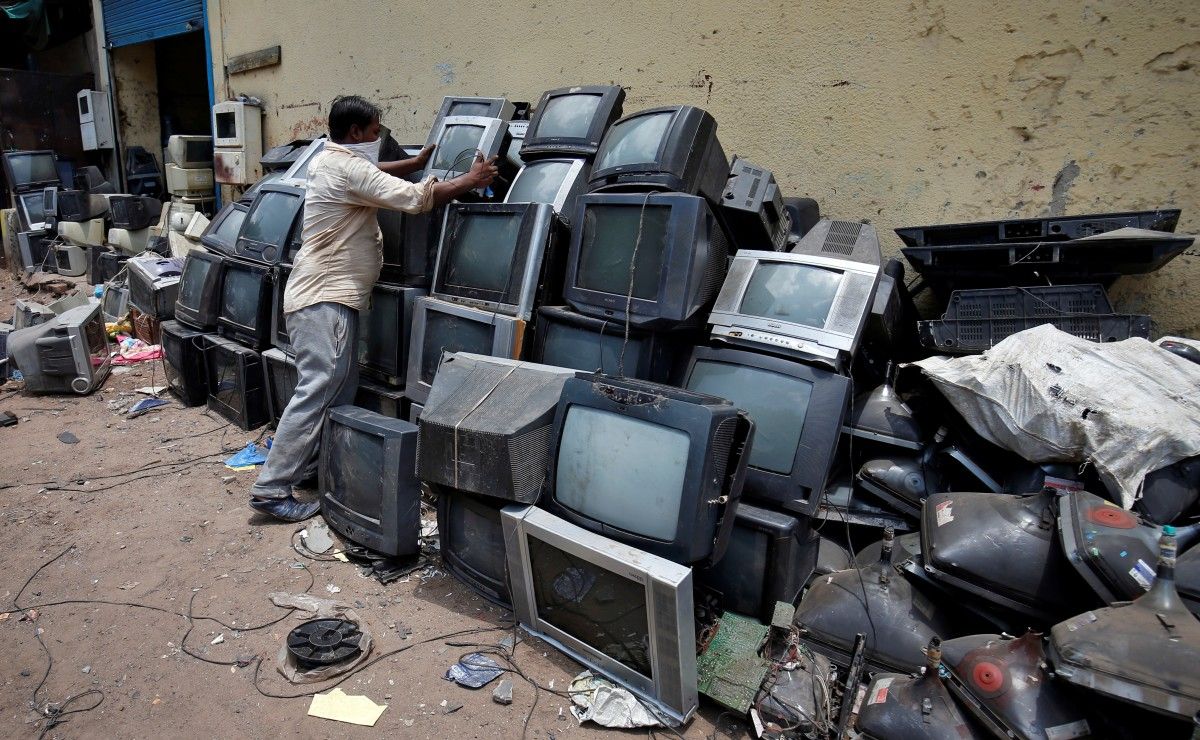The economics of e-waste

A few minutes every morning is all you need.
Stay up to date on the world's Headlines and Human Stories. It's fun, it's factual, it's fluff-free.
The European Union and Japan, among others, are trying to encourage e-waste recycling to happen by passing laws that incentivize manufacturers to fund recycling efforts.
How do e-waste companies make money?
- The money in e-waste (electronic waste) literally boils down to stripping old electronics of the precious metals it takes to make them.
- There is a lot of money to be made here – based on the rate of e-waste production, the United States alone throws out phones with US$60 million worth of gold and silver every year.
- And according to a report from the United Nations University, a global think tank located in Japan, the amount of precious metals in unrecycled e-waste is conservatively estimated to be US$57 billion.
- Basically, US$57 billion worth of gold, silver, platinum and other valuable materials end up in landfills rather than in recycling facilities and, eventually, into other products.
- In recent years, companies have gotten better at taking advantage of this (literal) buried treasure and corporations like Apple have also taken the initiative of investing in recycling technology.
- But there are also a number of companies that focus on sending e-waste to countries like Ghana, India, China, or Pakistan so that a large network of off-the-books employees can recycle them using unsafe methods that cause health problems and can even poison drinking water.
If it’s so profitable, why aren’t countries doing more to help the industry?
- The European Union and Japan, among others, are trying to encourage e-waste recycling to happen by passing laws that incentivize manufacturers to fund recycling efforts.
- At the 2020 Olympics in Tokyo (scheduled for the summer of 2021), athletes who win their competitions will be awarded gold, silver and bronze medals that are made from recycled e-waste.
- There has also been a scattered push in the US for e-waste recycling laws, but at least 22 states still don’t have any legislation covering e-waste and there has been no federal push for it.
- This legislation is also intended to make sure e-waste isn’t exported to other countries.
- Part of this is due to the human rights concerns mentioned before. The e-waste that is shipped to developing countries usually ends up causing harm to humans and legislation in the EU particularly addresses this.
- The other part of it, though, is the vision of what some are calling a “circular economy” for e-waste.
What is a circular economy?
- The theory behind a circular economy is that refurbished, reused and recycled raw materials end up fueling a more sustainable system through which we create products.
- The circular economy means that everything possible is done to prolong the life of electronics through repair and refurbishment, something that is difficult right now due to a lack of right-to-repair laws.
- When electronics inevitably reach the end of their life span, the emphasis is placed on recycling as much of the raw materials from the device as possible and minimizing the actual waste produced.
- By extracting those resources, experts think the circular economy could also prove to be a way for countries to secure the resources they need for the future without relying on an increasingly volatile global market.
- The end goal for believers of the circular economy is to reduce the impact that mining for minerals has on the environment and reduce the carbon emissions it takes to produce those materials in the first place.
Have a tip or story? Get in touch with our reporters at tips@themilsource.com




Comments ()